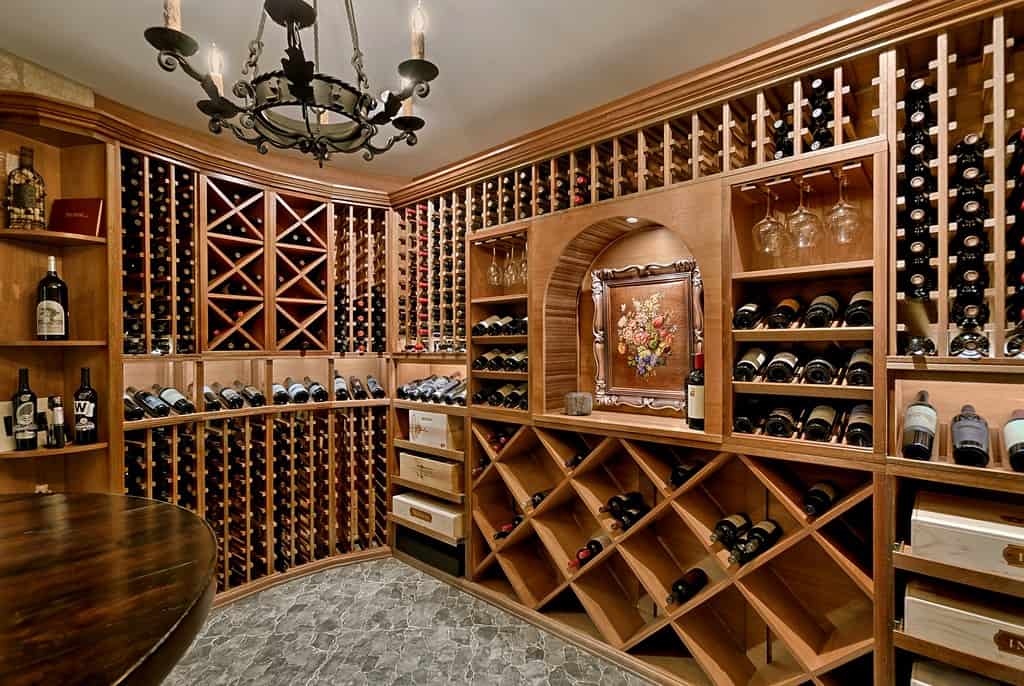Introduction
Table of Contents
For wine enthusiasts, owning a home wine cellar is more than just a luxury—it’s a dream. Whether you’re collecting bottles for personal enjoyment or long-term investment, proper wine cellar design ensures your collection stays preserved, accessible, and stylishly displayed.
Designing a wine cellar isn’t just about aesthetics. It requires thoughtful consideration of temperature, humidity, storage systems, lighting, and space optimization. In this guide, we’ll cover all the important tips for your home’s wine cellar design to help you create a sophisticated and functional wine storage solution that adds value to your home.
1. Choose the Right Location in Your Home
The first step is identifying the most suitable area for your wine cellar. The ideal location is:
-
Cool and dark
-
Away from heat sources (boilers, ovens, direct sunlight)
-
In a low-vibration environment
📍 Popular Wine Cellar Locations:
-
Basement (most common due to natural insulation)
-
Spare room or closet conversion
-
Under-the-stairs wine nook
-
Garage (with proper insulation)
-
Kitchen or dining room walls (for smaller collections)
Pro tip: Basements are naturally cooler and more stable, making them perfect for large wine collections.
2. Prioritize Climate Control
Wine is incredibly sensitive to temperature and humidity fluctuations. Proper climate control ensures wine ages gracefully and doesn’t spoil prematurely.
🌡 Ideal Wine Storage Conditions:
-
Temperature: 55°F (13°C)
-
Humidity: 60-70%
You’ll need:
-
A wine cellar cooling unit (not an air conditioner)
-
Vapor barrier insulation to maintain internal conditions
-
Hygrometer and thermometer to monitor levels
Neglecting this can lead to:
-
Mold growth
-
Cork shrinkage or expansion
-
Premature aging or spoilage
3. Select the Right Racking System
Racking systems are the heart of any wine cellar design. They ensure each bottle is safely stored while maximizing capacity and accessibility.
🪵 Types of Wine Racks:
-
Individual bottle racks: Classic and elegant, best for long-term storage
-
Diamond bins: Good for bulk or mixed cases
-
Modular racks: Ideal for growing collections
-
Metal wall-mounted racks: Sleek and space-saving
-
Display shelves: For showcasing featured bottles
🔍 Materials to Consider:
-
Wood (redwood, mahogany, pine)
-
Metal (modern and minimalist)
-
Acrylic or glass (for contemporary aesthetics)
Tip: Make sure racks are slightly tilted backward to keep corks moist and prevent air entry.
4. Focus on Insulation and Vapor Barriers
Your wine cellar must be sealed like a refrigerated space. Proper insulation and vapor barriers are essential to control humidity and prevent mold or mildew.
🔧 Insulation Guidelines:
-
Use closed-cell spray foam or rigid foam board insulation.
-
Ensure doors and walls are fully insulated and airtight.
-
Install a vapor barrier on the warm side (usually the outside wall) to prevent condensation.
Failure to do this can ruin your collection and damage the cellar structure.
5. Use Low-Heat, Ambient Lighting
Lighting plays a huge role in both the ambience and preservation of your wines. But since UV rays and heat can damage wine, choose low-heat, indirect lighting.
💡 Best Wine Cellar Lighting Options:
-
LED lights: Energy-efficient and heat-free
-
Recessed lighting: Clean and modern look
-
Strip lights under racks: Adds soft ambient glow
-
Spotlights for featured bottles or tasting areas
Avoid halogen or incandescent bulbs—they generate heat and may harm your collection over time.
6. Don’t Forget Ventilation
Ventilation is often overlooked in wine cellar design. Without it, your cellar can become musty, which affects both the air quality and wine labels.
🔄 What to Include:
-
Proper exhaust venting from the cooling unit
-
Passive airflow vents if no active system is used
-
Dehumidifier if your space retains excess moisture
Good airflow ensures your cellar remains fresh and mold-free.
7. Customize Based on Collection Size
Before you begin construction, assess your current and future collection size. Are you storing 100 bottles? 1,000? A mix of reds, whites, and champagnes?
📦 Planning Tips:
-
Design for 25–30% more than your current bottle count
-
Include different rack types for various bottle shapes and sizes
-
Add space for wine crates or wooden boxes if you buy in bulk
Having flexibility in your storage system ensures longevity in your cellar design.
8. Incorporate a Tasting or Display Area
A wine cellar isn’t just about storage—it can be a place to gather and enjoy. If you have space, consider adding:
-
A small tasting table
-
Built-in wine glass storage
-
Open shelving for decanters or bar tools
-
Decorative artwork or signage
This turns your cellar into a functional yet luxurious extension of your home.
9. Add Smart Tech Integration
Technology can enhance your wine cellar experience through smart features like:
-
Automated temperature control
-
Humidity sensors
-
Inventory management apps (to track your bottles)
-
Motion-activated lighting
-
Security systems for high-value collections
Smart wine cellars are not only practical but also align with modern luxury living.
10. Keep a Budget and Timeline in Mind
Wine cellars can range from a few thousand dollars to six figures, depending on size and features.
💰 Average Wine Cellar Costs:
-
Small closet conversion: $2,000–$8,000
-
Mid-sized basement cellar: $10,000–$30,000
-
Custom luxury cellar: $50,000+
Plan for contingencies and ongoing maintenance like climate control servicing or rack repairs.
Quick Checklist: Essentials for a Home Wine Cellar
| Component | Must-Have? | Notes |
|---|---|---|
| Location | ✅ | Cool, dark, low-vibration area |
| Insulation | ✅ | Walls, floors, ceilings |
| Climate Control Unit | ✅ | Dedicated wine cooling system |
| Racking System | ✅ | Wood or metal based on preference |
| Lighting | ✅ | LED, ambient, low-heat lighting |
| Humidity Control | ✅ | Hygrometer + dehumidifier if needed |
| Ventilation | ✅ | Passive or mechanical airflow |
| Tasting Area | Optional | Adds luxury and functionality |
| Smart Features | Optional | Modern monitoring and management |
Mistakes to Avoid in Wine Cellar Design
-
❌ Installing in direct sunlight
-
❌ Using regular AC units
-
❌ Poor insulation and sealing
-
❌ Overcrowding bottles
-
❌ Neglecting future expansion
-
❌ Improper humidity levels
-
❌ Lack of proper ventilation
-
❌ Choosing the wrong rack type for your collection
Avoiding these common pitfalls ensures your wine stays safe and your investment remains sound.
Conclusion
Designing a home wine cellar is a rewarding project that requires attention to detail, thoughtful planning, and a touch of luxury. By focusing on the key areas—location, climate control, storage design, insulation, and lighting—you can build a wine cellar that’s not only functional but also a beautiful centerpiece of your home.
Whether you’re a serious collector or just starting your wine journey, these important tips for your home’s wine cellar design will help you create a space that preserves your wine perfectly and elevates your lifestyle.

